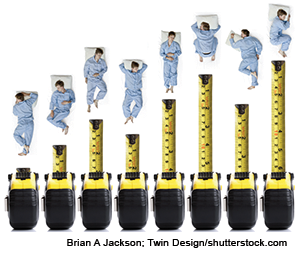Dr. Jacobowitz believes that widespread adoption will come with greater emphasis on alternative measurements in any clinical trial for OSA. “This isn’t difficult for quality-of-life measures, but it will present a challenge for some other variables such as cardiovascular incidents because they must be measured over a very long time,” he said. “But we have to remember what’s important to the patient and for our health system: how the patient is functioning, and the overall status of their health.”
Explore This Issue
December 2014Amy Hamaker is a freelance medical writer based in California.
